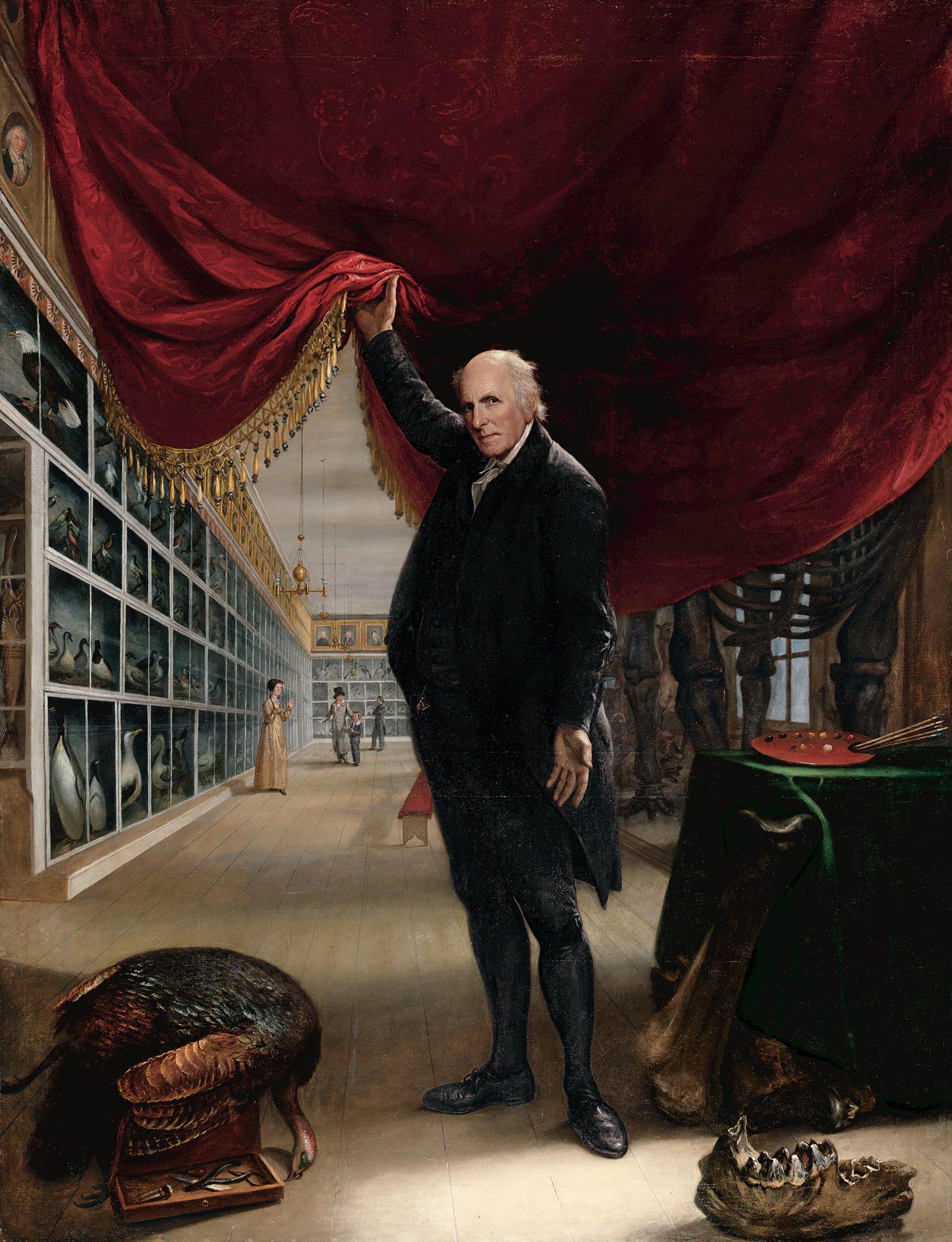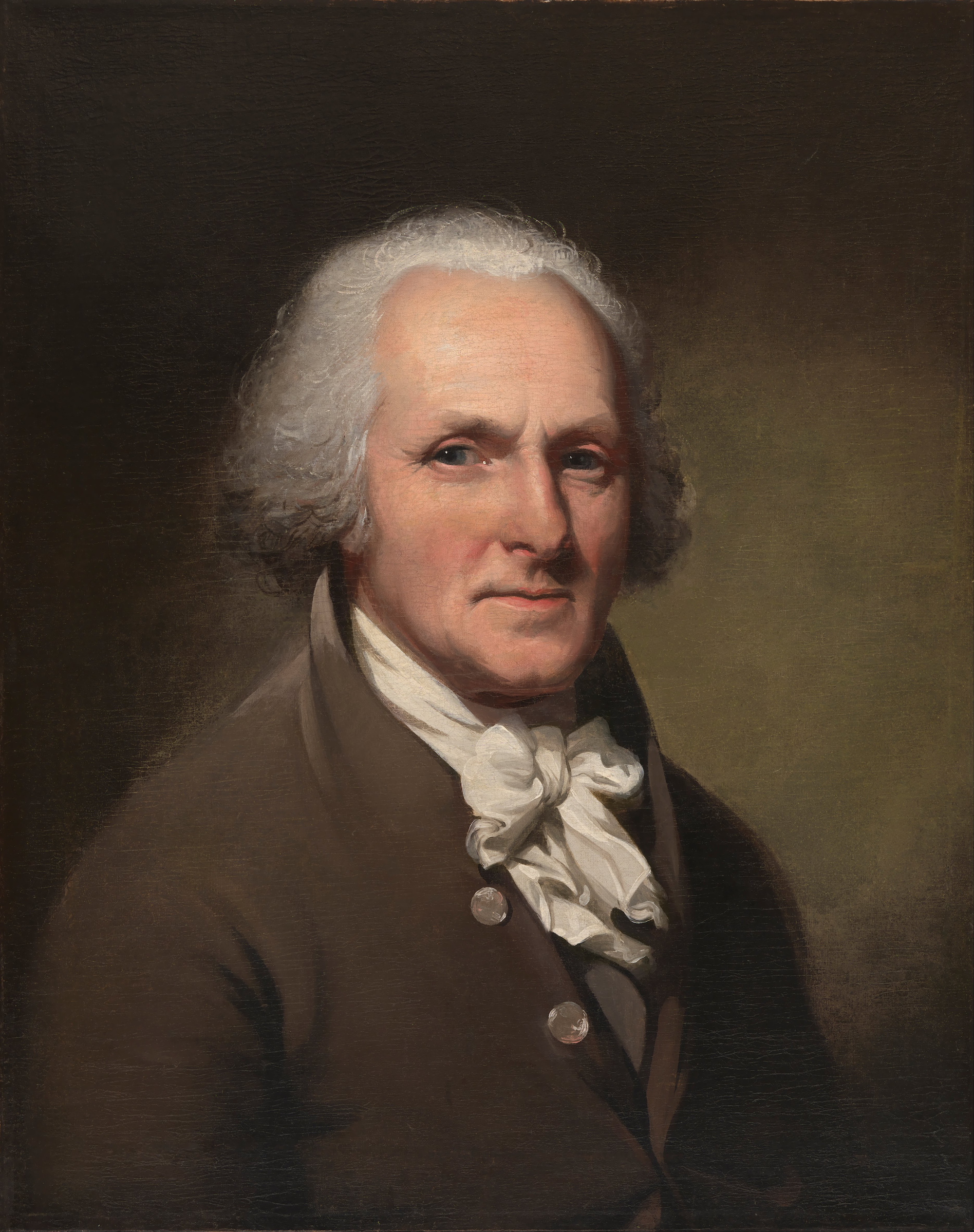Charles Willson Peale was a pretty big deal in early American art and culture. He was one of George Washington’s most frequent portrait painters, as well as the father of America’s first artistic dynasty. He was equally interested in science, which had many new developments during the Enlightenment. In this painting he proudly shows off his very own natural history museum.
The Artist in His Studio is massive in size, and that allows it to create some pretty cool effects. When seen from a distance, it can almost give the illusion that Peale’s museum is an extension of the real-life museum you’re visiting. Peale, who was eighty-one when he made this painting, appears life sized and draws back a red curtain to reveal his collections. He looks proud to display the culmination of his life’s work.
It’s easy to see the details of some of Peale’s exhibits in the background. They include many bird specimens in glass cases, portraits hanging above the cases, and a mastodon skeleton partially hidden behind the red curtain. You can also see the figures of several people (two men, a woman, and a child) exploring the collections. It’s easy to relate to them when you see this painting hanging in a museum. After all, they’re doing exactly what you’re doing almost 200 years later. Sharing his collections for other people’s enjoyment and education was important to Peale, who founded several museums and art academies. One of them was the Pennsylvania Academy of Fine Arts, which owns this painting.
- Alexandra Kiely
P.S. Have also a look In the Studio of William Merritt Chase.


 Charles Willson Peale
Charles Willson Peale